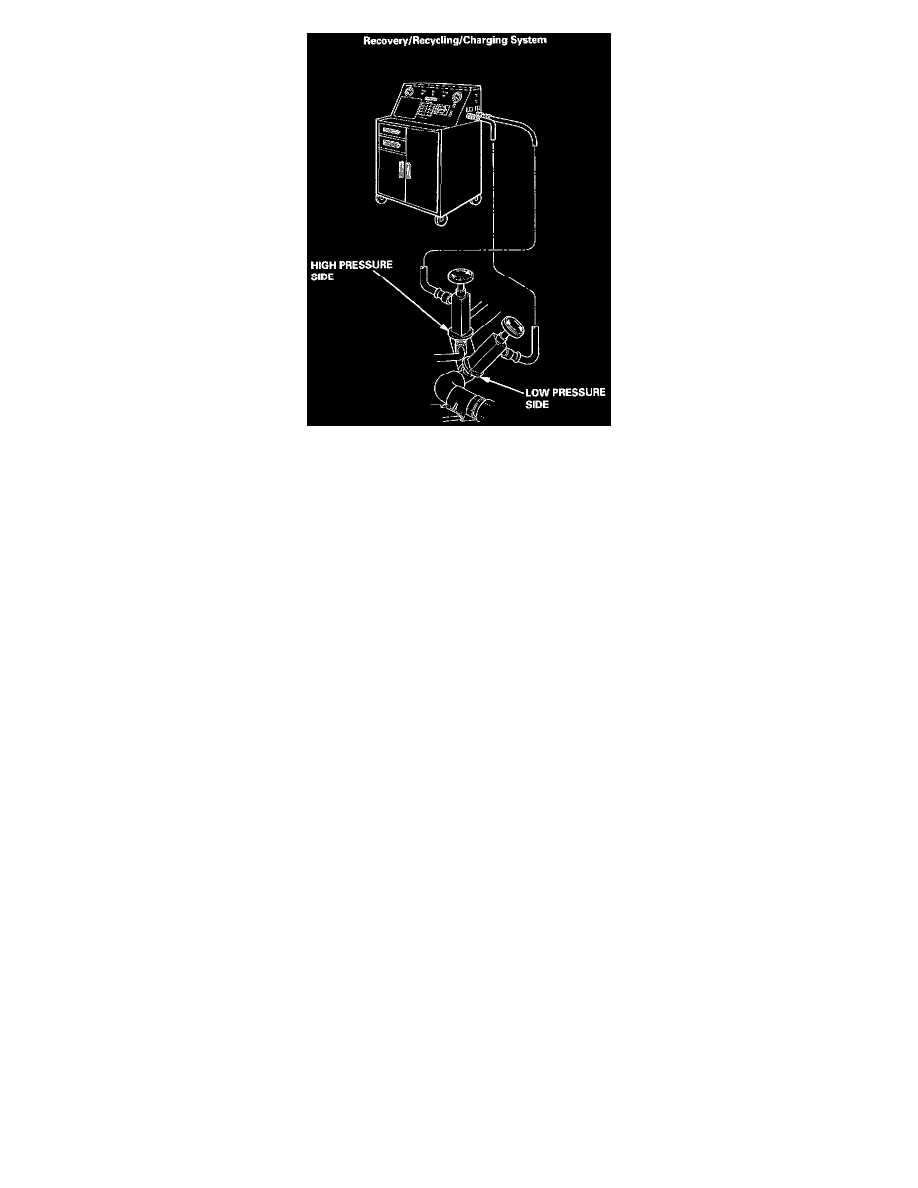Oasis LS L4-2156cc 2.2L SOHC MFI F22B6 (1997)

A/C System Service-Performance Test
Use only service equipment that is U.L.-Listed and is certified to meet the requirements of SAE J221O to remove HFC-134a (R-134a) from the air
conditioner system.
CAUTION: Exposure to air conditioner refrigerant and lubricant vapor or mist can irritate eyes, nose and throat. Avoid breathing the air
conditioner refrigerant and lubricant vapor or mist.
If accidental system discharge occurs, ventilate work area before resuming service.
R-134a service equipment or vehicle air conditioner systems should not be pressure tested or leak tested with compressed air.
WARNING: Some mixtures of air and R-134a have been shown to be combustible at elevated pressures and can result in fire or explosion
causing injury or property damage. Never use compressed air to pressure test R134a service equipment or vehicle air conditioner systems.
Additional health and safety information may be obtained from the refrigerant and lubricant manufacturers.
1. When an A/C System has been opened to the atmosphere, such as during installation or repair, it must be evacuated using a R-134a refrigerant
Recovery/Recycling/Charging System. (If the system has been open for several days, the receiver/dryer should be replaced, and the system should
be evacuated for several hours.)
2. Connect a R-134a refrigerant Recovery/Recycling/Charging System to the vehicle, as shown, following the equipment manufacturer's instructions.
NOTE: If the low-pressure does not reach more than 93.3 kPa (700 mm Hg, 27.6 in.Hg) in 15 minutes, there is probably a leak in the system.
Partially charge the system, and check for leaks (see Leak Test).
3. Charging
